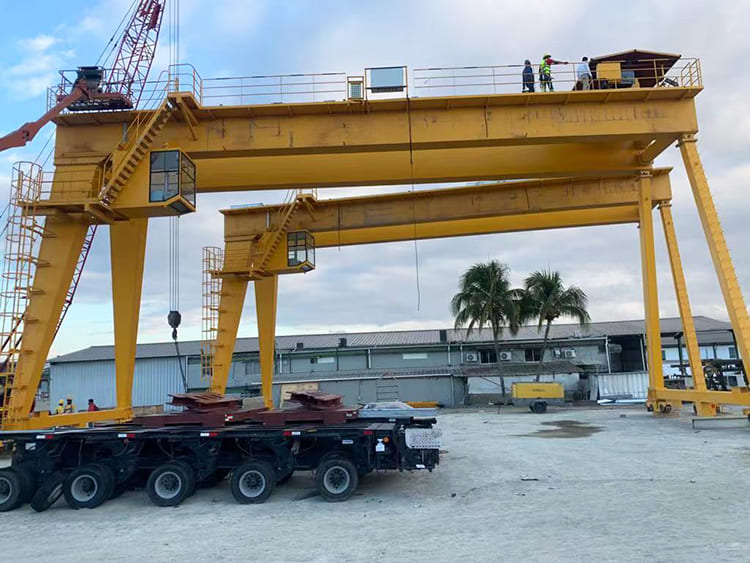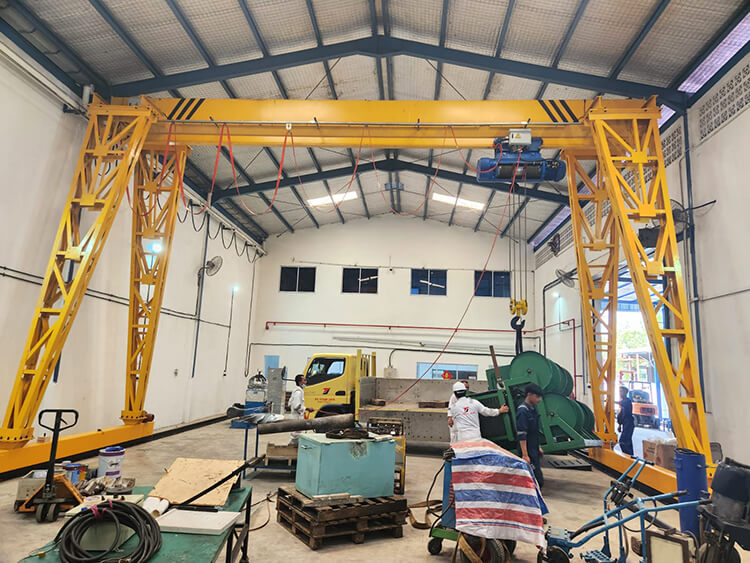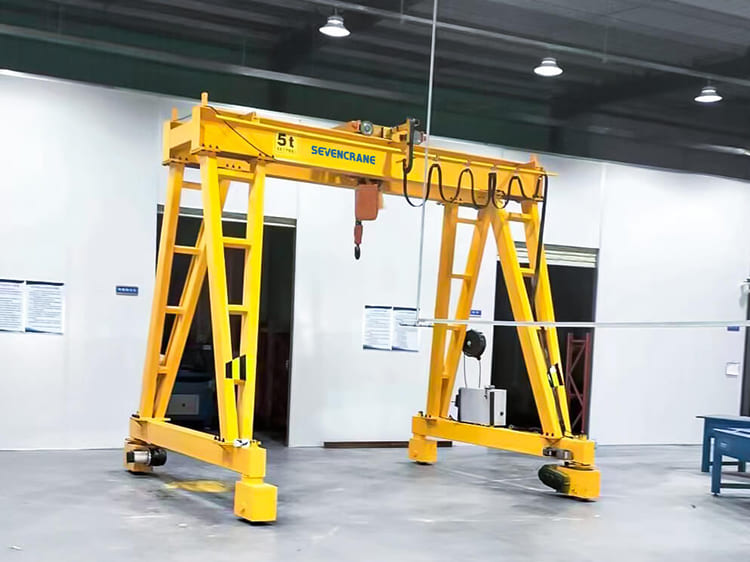A gantry crane is a type of crane that uses a gantry structure to support a hoist, trolley, and other materials handling equipment. The gantry structure is typically made of steel beams and columns, and is supported by large wheels or casters that run on rails or tracks.
Gantry cranes are often used in industrial settings such as shipping yards, warehouses, factories, and construction sites to lift and move heavy materials and equipment. They are particularly useful in applications where the load needs to be lifted and moved horizontally, such as loading and unloading cargo from ships or trucks.
In the construction industry, they are used to lift and move heavy building materials such as steel beams, concrete blocks, and precast panels. In the automotive industry, gantry cranes are used to move large car parts, such as engines or transmissions, between different workstations on the assembly line. In the shipping industry, gantry cranes are used to load and unload cargo containers from ships and trucks.
There are two main types of gantry cranes: fixed and mobile. Fixed gantry cranes are typically used for outdoor applications such as loading and unloading cargo from ships, while mobile gantry cranes are designed for indoor use in warehouses and factories.
Fixed gantry cranes are usually mounted on a set of rails so that they can move along the length of a dock or shipping yard. They typically have a large capacity and can lift heavy loads, sometimes up to several hundred tons. The hoist and trolley of a fixed gantry crane can also move along the length of the gantry structure, allowing it to pick up and move loads from one location to another.
Mobile gantry cranes, on the other hand, are designed to be moved around a worksite as needed. They are typically smaller than fixed gantry cranes and have a lower lifting capacity. They are often used in factories and warehouses to move materials between different workstations or storage areas.
The design of a gantry crane depends on a variety of factors including the weight and size of the load being lifted, the height and clearance of the workspace, and the specific requirements of the application. Gantry cranes can be customized with a variety of features and options depending on the needs of the user. These features may include automated controls, variable speed drives, and specialized lifting attachments for different types of loads.
In conclusion, gantry cranes are essential tools for lifting and moving heavy materials and equipment in a variety of industries. They come in a range of sizes and configurations to meet the specific needs of the user. Whether fixed or mobile, gantry cranes are capable of lifting and moving loads weighing several hundred tons.










